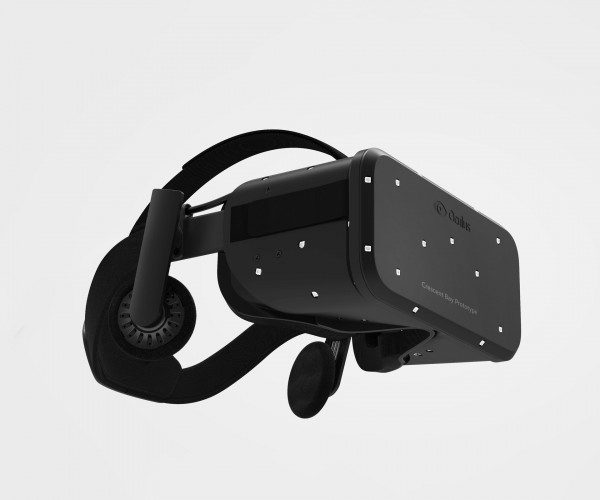Last week at GDC, Valve revealed not just a headset, but a stage upon which pioneering storytellers and game designers will create the first VR experiences of a defining platform.
Since the Oculus Rift Kickstarter back in 2012, virtual reality headsets have been making tremendous progress. Multiple companies are developing headsets capable of giving users an immersive view into another world.
With those headsets, developers have created some incredible games and applications, but the vast majority of them use entirely unrealistic means of interaction and locomotion—or eschew it entirely. As soon as you have to use your head to ‘select’ an object for interaction, or rotate and move through the virtual world around you with a joystick, the sense of immersion fades.
Valve’s SteamVR is more than just a headset. With the HMD for visuals, innovative controllers for interacting, and a 15×15 foot space in which you can comfortably move with incredibly robust tracking, SteamVR is a stage for the imagination. I believe that this stage represents what will become the standard platform for high-end VR.
When the smartphone first hit, we saw thousands of apps that attempted to adapt existing control paradigms (think of the first-person ‘virtual joystick’ shooter, or the ‘hold to right-click’). As smartphones matured, it became clear that they constituted an entirely new platform, and the best applications were built from the ground up to use that platform in new ways, not simply shoehorn in old concepts of interaction and navigation. The standard smartphone platform is: a display, multi-touch input, and device orientation.
We’re in a similar place with VR today. Developers are getting smart about VR design, but locomotion and interaction are huge hurdles. You either use WASD or a joystick to navigate in VR or don’t allow the user to move at all, save for cutting from one scene to the next through a fade. For the former, the lack of proprioceptive cues (the feelings that come with actually moving through a space) causes a break in immersion, and nausea sometimes sets in. The latter, on the other hand, leaves the developer with some very difficult design challenges.
SteamVR solves these problems by creating a stage of constant Presence. VR developers need to start thinking not about how to adapt old navigation schemes, but what they can do with a 15×15 foot space, and a player who has controllers to reach out and interact naturally with the world. I believe that the standard platform for high-end VR will become: a display (headset), 1:1 motion input, and a ‘room-scale’ tracking space, as Valve calls it.
And before someone says, “But who the heck is going to dedicate a room in their house to a 15×15 foot VR stage?” I say this: Do you have a dedicated TV room in your house with a high-end TV? Millions, if not tens of millions of people do. As long as the experience is good enough, people will make room. And I probably don’t need to tell you that the VR experience is about 100x more exciting than a TV. Am I suggesting that millions of people are going to adopt VR and love it so much that they’ll dedicate a room to it? Yes.
Quick Comparison: ‘The Big Three’
Here’s a quick rundown for those of you who simply want to know where things stand among the major players.
Between the HTC Vive, Oculus Rift Crescent Bay, and Sony’s Morpheus 2015 prototype, there’s no clear winner in FOV or headtracking. Vive and Crescent Bay beat out Morpheus in resolution, but in my opinion, the current disparity is not enough to say that Morpheus is not in the same class. And to its credit, Morpheus may have the higher field of view, though I need more time in each headset to be sure.
When it comes to comfort, the HTC Vive dev kit is actually in last place as far as I’m concerned. The Morpheus 2015 prototype has better ergonomics, and Crescent Bay is lighter. Of course, we can expect Vive’s comfort to improve for the holiday 2015 consumer release.
But then there’s the rest of SteamVR: excellent motion input controllers and a room-scale navigable space. Looking at it this way, Oculus’ Crescent Bay can’t compete given the lack of input. Morpheus competes, but it loses out to less robust controller tracking and a relatively small tracking space.
There’s many factors to consider here, especially ease-of-use and price, which would change this assessment depending upon the needs of the individual. But if we’re looking purely at the VR experience, SteamVR takes the cake (for now).
Continue Reading on Page 2: Hands-on with HTC Vive and SteamVR
Page: 1 2





